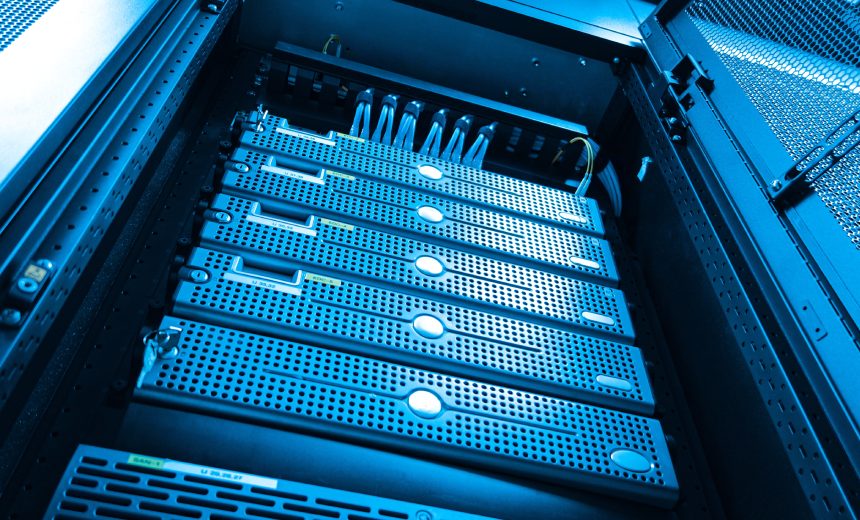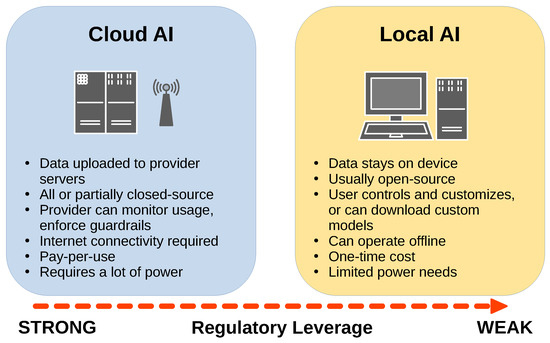
Beyond the Cloud: The Hardware You Need as GPT-4 Class Models Go Open Source
The artificial intelligence landscape is undergoing a seismic shift. For years, access to the most powerful large language models (LLMs), like those in the GPT-4 class, was primarily mediated through APIs from a handful of tech giants. This paradigm, while convenient, created a dependency on closed ecosystems. Now, a new wave of open-source models boasting hundreds of billions of parameters is breaking down these walled gardens. This democratization of cutting-edge AI, however, comes with a formidable challenge: the immense hardware requirements needed to run, fine-tune, and deploy these digital behemoths. The conversation is rapidly evolving from “which API should I call?” to “what hardware infrastructure must I build?”.
This move is more than just a trend; it represents a fundamental change in how developers, researchers, and businesses interact with AI. The latest GPT Open Source News highlights that models rivaling the performance of proprietary systems are now available for anyone to download. This newfound freedom brings with it critical responsibilities and strategic decisions centered on silicon. This article delves into the burgeoning world of GPT Hardware News, exploring the hardware spectrum from high-end consumer GPUs to sprawling data center clusters, and providing a roadmap for navigating this new, power-hungry frontier.
The New Hardware Frontier for Large Language Models
As the AI community celebrates unprecedented access to state-of-the-art models, a stark reality sets in: the hardware is the new gatekeeper. Understanding the technical demands of these models is the first step toward harnessing their power effectively and efficiently.
Why Hardware Suddenly Matters More Than Ever
When using a service like ChatGPT or a commercial API, the complex hardware infrastructure is abstracted away. The provider manages the vast clusters of GPUs, networking, and cooling, delivering results for a per-token fee. This is a simple and scalable model for many applications. However, self-hosting a massive open-source model transfers this responsibility entirely to the user. This shift forces a direct confrontation with the core metrics of AI hardware performance. The most critical factor is GPU Video RAM (VRAM), which dictates whether a model can even be loaded into memory. Beyond VRAM, raw compute power (measured in TFLOPs), memory bandwidth (how fast data moves between the GPU’s memory and its cores), and interconnect speed (like NVIDIA’s NVLink or InfiniBand for multi-GPU setups) become paramount. The latest GPT Scaling News shows that poor interconnect can cripple a multi-GPU system, making it less effective than a single, more powerful card. These factors directly impact GPT Latency & Throughput News, determining how quickly a model can generate a response and how many users it can serve simultaneously.
Decoding Model Size: Parameters, Quantization, and VRAM
The relationship between a model’s parameter count and its hardware footprint is direct and unforgiving. A model’s parameters are stored as floating-point numbers. In standard 16-bit precision (FP16), each parameter requires 2 bytes of storage. A simple calculation reveals the challenge: a 400-billion-parameter model requires approximately 800 GB of VRAM (400 billion * 2 bytes) just to be loaded for inference, without even accounting for the overhead of the context window (KV cache) and other operational memory. This immediately rules out all consumer-grade and most individual enterprise-grade GPUs.
This is where optimization techniques become essential. The most important development in GPT Efficiency News is quantization. GPT Quantization News reports on methods that reduce the precision of the model’s weights from 16-bit or 32-bit floating-point numbers to 8-bit integers (INT8) or even 4-bit integers (INT4). This can slash VRAM requirements by 50% to 75%, making it possible to run larger models on smaller hardware. For instance, our 400B model, when quantized to INT4 (0.5 bytes per parameter), would require “only” 200 GB of VRAM. Other techniques like GPT Compression News and GPT Distillation News, where a smaller “student” model is trained to mimic a larger “teacher” model, are also crucial for deploying AI on more accessible hardware, including edge devices, a key topic in GPT Edge News.
A Spectrum of Hardware Solutions: From Desktop to Data Center
The hardware required to run today’s premier LLMs varies dramatically based on the model’s size and the intended application, from experimentation and fine-tuning to full-scale production deployment.

Prosumer and Workstation Setups
For AI enthusiasts, independent developers, and small research teams, the prosumer market offers a viable entry point. High-end consumer GPUs like the NVIDIA RTX 4090 with 24 GB of VRAM, or professional workstation cards like the RTX 6000 Ada Generation with 48 GB, are powerful tools. While they cannot run a 400B+ model natively, they are perfect for running smaller, highly capable models (in the 7B to 34B parameter range) or for experimenting with larger models using aggressive quantization and memory offloading techniques. A real-world scenario involves a startup using two RTX 4090s to fine-tune a 13B parameter GPT Code Models News-focused model on their proprietary codebase. This allows them to create a powerful, custom coding assistant without incurring high cloud costs, a popular topic in GPT Custom Models News and GPT Fine-Tuning News.
Enterprise-Grade GPU Servers
For serious commercial applications, fine-tuning large models, or running high-throughput inference, enterprise-grade hardware is non-negotiable. This is the domain of NVIDIA’s H100 (80 GB VRAM) and H200 (141 GB VRAM) GPUs, and AMD’s Instinct MI300X (192 GB VRAM). A typical server configuration might include eight of these GPUs connected via a high-speed interconnect like NVLink. For our 400B model example, a server with four H200 GPUs (564 GB total VRAM) or two MI300X GPUs (384 GB total VRAM, sufficient with quantization) would be a viable setup. A case study in GPT in Healthcare News might feature a hospital deploying an on-premise server with 8x H100s to run a specialized medical LLM for analyzing patient records. This on-premise approach, a key part of GPT Deployment News, ensures compliance with strict GPT Privacy News regulations like HIPAA by keeping sensitive data within the organization’s firewall.
The Rise of Specialized AI Accelerators
The hardware landscape is not just an NVIDIA and AMD duopoly. A growing number of companies are developing specialized AI accelerators. Google’s Tensor Processing Units (TPUs) have long been a powerhouse for training within their cloud ecosystem. More recent GPT Competitors News includes startups like Groq, which has developed a Language Processing Unit (LPU) designed for extremely low-latency inference, and Cerebras, which builds wafer-scale engines for massive training tasks. This diversification in GPT Architecture News is critical, as different hardware designs can excel at different tasks—some may be better for training, others for batch inference, and still others for real-time chatbot applications. This ongoing GPT Research News promises a future with more hardware choices tailored to specific AI workloads.
Strategic Implications of the Hardware Shift
The move towards self-hosted, open-source AI is not just a technical challenge; it carries profound strategic implications for businesses, the AI ecosystem, and the future of innovation.
Democratization vs. Centralization: A New Divide
There is a fascinating paradox at play. On one hand, open-source models democratize access to the software, breaking the dependency on a few large AI labs. Any organization can now download a model that is on par with the best proprietary offerings. On the other hand, the extreme hardware costs risk re-centralizing power around entities that can afford the multi-million dollar capital expenditure for GPU clusters—namely, large corporations, cloud providers, and well-funded startups. This creates a new divide and raises important questions for the GPT Ethics News and GPT Regulation News communities about ensuring fair access and preventing the concentration of AI power. The health of the entire GPT Ecosystem News depends on navigating this tension.
On-Premise vs. Cloud: The Control and Cost Trade-off
For any organization looking to deploy a large LLM, the “build vs. buy” decision is critical.
- Cloud Platforms: Using cloud providers like AWS, GCP, or Azure offers immediate access to high-end GPUs without the upfront cost. This provides scalability and flexibility, which is ideal for experimentation or fluctuating workloads. However, it can lead to high operational expenses over time, and for industries like finance and healthcare, sending sensitive data to a third party raises significant privacy and security concerns. This is a recurring theme in GPT in Finance News and GPT in Legal Tech News.
- On-Premise Deployment: Building an in-house AI server provides maximum control, security, and data privacy. For constant, high-volume workloads, it can also have a lower Total Cost of Ownership (TCO) over several years. The downsides are the substantial initial investment, the need for in-house expertise to manage the infrastructure, and the slower pace of hardware upgrades.

Spurring Innovation in Hardware and Software Optimization
The intense demand for running massive models on limited hardware is a powerful catalyst for innovation. On the software side, this has led to an explosion of research into more advanced GPT Optimization News. This includes sophisticated GPT Inference Engines News like vLLM and TensorRT-LLM, which use techniques like paged attention to dramatically improve throughput. On the hardware side, it pushes manufacturers to develop GPUs with more VRAM, higher memory bandwidth, and more efficient tensor cores, directly influencing future GPT Trends News.
Navigating Your AI Hardware Strategy: Recommendations
Developing a coherent hardware strategy is essential for anyone serious about leveraging open-source AI. The right approach depends heavily on your scale, budget, and goals.
For Individuals and Small Teams
For those just starting, the key is to be lean and agile.
- Start with the Cloud: Use pay-as-you-go GPU rental services (e.g., RunPod, Lambda Labs, Vast.ai) to access powerful hardware without a large investment. This is perfect for initial experiments and fine-tuning projects.
- Embrace Quantization: Learn to use tools like llama.cpp and Hugging Face’s transformers library to run quantized versions of large models on consumer hardware like an RTX 3090 or 4090.
- Focus on Specificity: Instead of trying to run the largest model possible, focus on fine-tuning smaller, more efficient models to excel at a specific task. Many powerful GPT Applications News, from GPT Chatbots News to specialized GPT Assistants News, are built this way.

For Mid-to-Large Enterprises
Enterprises need to think about scalability, security, and long-term cost.
- Conduct a TCO Analysis: Before committing to a path, rigorously model the costs of cloud vs. on-premise over a 3-5 year horizon. Factor in hardware, power, cooling, maintenance, and personnel.
- Build a Hybrid Strategy: Leverage the cloud for bursting capacity and R&D, while building on-premise infrastructure for core, predictable, and data-sensitive workloads. This is a cornerstone of modern GPT Integrations News.
- Invest in MLOps Talent: The best hardware is useless without a skilled team to manage it. Invest in engineers who understand not just AI models, but also the underlying hardware and deployment infrastructure.
Common Pitfalls to Avoid
As you navigate this landscape, be wary of common mistakes. The most frequent is underestimating VRAM requirements—it is almost always the primary bottleneck. Another is ignoring interconnect bandwidth in multi-GPU setups; a slow connection can negate the benefits of adding more GPUs. Finally, don’t focus exclusively on training performance benchmarks. For most applications, inference is the sustained, long-term workload, making GPT Inference News and metrics from GPT Benchmark News on latency and throughput far more important for production systems.
Conclusion
The rise of GPT-4 class open-source models is a watershed moment for the AI industry, promising unprecedented innovation and access. However, this software revolution is inextricably linked to a hardware revolution. The ability to run these models is no longer an abstract problem for cloud providers but a tangible, strategic challenge for organizations of all sizes. From the VRAM in a desktop GPU to the interconnects in a data center, hardware has become a first-class citizen in the AI development lifecycle.
As we look to the GPT Future News, we can expect a continued co-evolution: models will be designed with hardware constraints in mind, and hardware will be architected to meet the specific demands of next-generation AI, including complex GPT Multimodal News and GPT Vision News. Successfully navigating this new era requires more than just downloading a model; it demands a deep, strategic understanding of the silicon that brings it to life.



